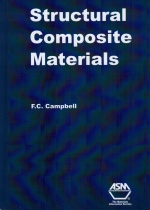Tab Article
This book deals with all aspects of advanced composite materials; what they are, where they are used, how they are made, their properties, how they are designed and analyzed, and how they perform in-service. It covers both continuous and discontinuous fiber composites fabricated from polymer, metal, and ceramic matrices, with an emphasis on continuous fiber polymer matrix composites.
The book starts with an overview of composite materials and how highly anistropic composites differ from isotropic materials, such as metals. Some of the important advantages and disadvantages of composites are then discussed. The first chapter wraps up with some of the applications for advanced composites. Next, the reinforcements and their product forms are covered with an emphasis on glass, aramid, and carbon fibers. This is followed by a chapter on polymer matrix resin systems, covering the main thermosetting and thermoplastic resin systems, including polyesters, vinyl esters, epoxies, bismaleimides, cynate esters, polyimides, and phenolics. The principles of resin toughening are also presented, along with an introduction to the physiochemical tests that are used to characterize resin and cured laminates.
The next part of the book covers polymer composite fabrication processes, with chapters on cure tooling, thermoset composite fabrication processes, and thermoplastic composites fabrication processes. Important thermoset lay-up methods include wet lay-up, prepreg lay-up, automated tape laying, fiber placement, filament winding, and pultrusion. Vacuum bagging in preparation for cure is also discussed along with the cure processes for both addition and condensation curing thermosets. Thermoset liquid molding covers preforming technology (weaving, knitting, stitching, and braiding) followed by the major liquid molding processes, namely resin transfer molding (RTM), resin film infusion (RFI), and vacuum assisted resin transfer molding (VARTM).


